The 1923 Peace Silver Dollar value varies significantly based on mint mark, condition, and errors. Circulated coins typically range from $25-$60, while uncirculated examples can be worth substantially more. The 1923-S (San Francisco) is most valuable, with MS65 specimens selling for over $2,500 and an MS66 reaching a record $49,200 at auction. The 1923-D (Denver) and no mint mark (Philadelphia) versions are generally less valuable but still collectible. Key value factors include professional grading from PCGS or NGC, coin condition on the Mint State scale, and presence of mint errors like rotated reverses or strike-throughs. Rare errors can significantly increase value beyond standard grades.
Walking into your grandfather’s study, you discover a small velvet pouch containing silver dollars from the 1920s. Among them, a 1923 Peace Dollar catches your eye—its Lady Liberty design still gleaming despite a century of existence. What you might not realize is that this seemingly ordinary coin could be worth anywhere from twenty-five dollars to over forty-nine thousand dollars, depending on where it was minted and its current condition. Understanding the nuances of the 1923 Peace Silver Dollar value requires examining mint marks, grading standards, and those rare minting errors that can transform a common coin into a collector’s treasure.
Understanding the 1923 Peace Dollar: Three Distinct Varieties
The 1923 Peace Dollar came from three different United States Mint facilities, each producing coins with distinct characteristics and current market values. The Philadelphia Mint struck coins without any mint mark, producing 30,800,000 pieces—making it the most common variety. The Denver Mint added a small “D” below the word “ONE” on the reverse, creating 6,811,000 coins. The San Francisco Mint, marked with an “S” in the same location, produced 19,020,000 pieces.
Each mint facility operated different presses and employed different techniques, resulting in subtle variations in strike quality and luster. Philadelphia coins typically exhibit sharper details on Liberty’s hair and the eagle’s feathers, while Denver strikes often show weaker definition in high-relief areas. San Francisco pieces fall somewhere between these extremes, though individual specimens vary considerably.
The composition remained consistent across all three mints: ninety percent silver and ten percent copper, with each coin containing 0.77344 troy ounces of pure silver. This metal content establishes a baseline “melt value” that fluctuates with silver spot prices, currently providing a floor of approximately twenty-four to twenty-seven dollars regardless of condition.
1923 Philadelphia Peace Dollar Values: No Mint Mark Edition
Philadelphia’s massive production run means most collectors can acquire circulated examples without significant expense. A coin graded Good-4 (G-4), showing heavy wear with Liberty’s hair nearly smooth and the eagle’s feathers barely visible, trades for twenty-eight to thirty-two dollars. Moving up to Fine-12 (F-12), where major design elements remain clear but high points show wear, prices increase to thirty-five to forty-two dollars.
The jump to uncirculated grades dramatically changes valuation. An MS-60 specimen, technically uncirculated but displaying numerous contact marks and lackluster surfaces, brings sixty to eighty-five dollars. MS-63 examples, with moderate eye appeal and fewer distracting marks, range from ninety to one hundred thirty dollars. Here’s where the 1923 Philadelphia Peace Dollar values become particularly interesting:
| Grade | Estimated Value |
|---|---|
| G-4 | $28–$32 |
| F-12 | $35–$42 |
| AU-50 | $45–$58 |
| MS-60 | $60–$85 |
| MS-63 | $90–$130 |
| MS-64 | $175–$285 |
| MS-65 | $425–$750 |
| MS-66 | $1,800–$3,500 |
| MS-67 | $15,000–$28,000 |
A Heritage Auctions sale from January 2023 recorded an MS-67 Philadelphia 1923 Peace Dollar selling for twenty-three thousand five hundred dollars. The coin displayed exceptional cartwheel luster and virtually mark-free surfaces—qualities that separate top-tier specimens from their merely excellent counterparts. Only seventeen coins have achieved MS-67 status through Professional Coin Grading Service (PCGS) grading, making them genuinely scarce despite the original high mintage.
1923-D Peace Dollar: The Denver Mint Premium
Denver’s lower mintage of 6,811,000 creates moderate scarcity, though not to the degree many collectors assume. Circulated 1923-D Peace Dollars in G-4 condition sell for thirty to thirty-five dollars, while F-12 examples command forty to fifty dollars. The premium over Philadelphia issues remains modest in worn grades.
Uncirculated 1923-D specimens show more significant price differences. MS-60 coins trade for one hundred to one hundred forty dollars, while MS-63 pieces bring two hundred to three hundred twenty dollars. The real separation occurs at MS-64 and above, where Denver’s typically weaker strikes make gem examples genuinely challenging to locate.
An MS-65 1923-D sold through Stack’s Bowers in September 2022 for one thousand three hundred seventy-five dollars, while an MS-66 specimen brought seven thousand eight hundred dollars at a Heritage auction in April 2023. These prices reflect the difficulty of finding Denver strikes with sharp details across Liberty’s hair and the eagle’s wing feathers—areas that often show weakness even on uncirculated examples.
Fewer than three dozen 1923-D Peace Dollars have received MS-66 grades from PCGS, and only two have achieved MS-67 status. The most recent MS-67 sale occurred in 2021, with the coin fetching thirty-eight thousand four hundred dollars—a testament to extreme rarity at the highest preservation levels.
1923-S Peace Dollar: The San Francisco Surprise
Despite a substantial mintage of 19,020,000 pieces, the 1923-S Peace Dollar commands the highest premiums in top grades. This counterintuitive situation results from San Francisco’s tendency to bag and ship large quantities of Peace Dollars for circulation in Western states, where they experienced heavy use in commerce.
Circulated 1923-S coins in G-4 condition sell for forty-eight to sixty dollars, already showing a premium over Philadelphia and Denver issues. F-12 examples bring sixty-five to eighty-five dollars, while AU-50 specimens (showing slight wear only on the highest points) trade for one hundred thirty to one hundred seventy-five dollars.
The uncirculated market reveals why serious collectors pursue 1923-S Peace Dollars with such enthusiasm:
| Grade | Estimated Value |
|---|---|
| MS-60 | $185–$265 |
| MS-63 | $285–$425 |
| MS-64 | $575–$925 |
| MS-65 | $2,100–$3,850 |
| MS-66 | $18,500–$52,000 |
A remarkable auction result from Heritage in August 2022 saw a PCGS MS-66 1923-S Peace Dollar achieve forty-nine thousand two hundred dollars. The coin exhibited blazing luster, sharp strike, and surfaces nearly devoid of contact marks—qualities that align perfectly in perhaps one coin from every thousand uncirculated survivors. Numismatic Guaranty Company (NGC) census data shows only nine 1923-S Peace Dollars graded MS-66, with none higher, making these among the most condition-rare Peace Dollars from the entire series.
Even MS-65 examples, while more available, require patience to acquire. A sale through Great Collections in November 2022 recorded an MS-65 specimen bringing two thousand five hundred eighty-five dollars, competing against twelve other bidders who recognized the coin’s quality.
Identifying Valuable Errors and Varieties
Mint errors on 1923 Peace Dollars can significantly enhance value beyond what grade alone determines. The most commonly encountered error involves die polishing lines—raised marks on the coin’s surface resulting from excessive die polishing at the mint. While minor die polishing creates only slight premiums, dramatic examples showing heavy raised lines across Liberty’s face or the eagle’s body can add twenty to forty percent to a coin’s base value.
Strike-through errors occur when foreign material lodges between the die and planchet during striking. A 1923 Philadelphia Peace Dollar with a struck-through fabric fragment sold for three hundred seventy-five dollars in MS-62 condition—roughly double the value of an error-free counterpart. The fabric created a distinctive smooth area on the coin’s surface where metal couldn’t flow into die recesses.
Rotated die errors, where the reverse die was installed at an incorrect angle relative to the obverse, appear occasionally on 1923 Peace Dollars. Standard U.S. coinage features “coin alignment,” meaning when you flip a coin top-to-bottom, the reverse appears upright. A fifteen-degree rotation might add fifty to one hundred dollars to value, while extreme rotations approaching ninety degrees can double or triple a coin’s worth. A 1923-S with approximately forty-five degrees of die rotation sold for nine hundred twenty dollars in AU-58 condition at a 2023 auction.
Doubled die varieties remain rare on 1923 Peace Dollars, unlike some other years in the series. Minor doubling occasionally appears on the date or motto, but significant examples commanding substantial premiums have not been definitively identified on 1923-dated coins. Collectors should approach claims of “valuable doubled dies” on 1923 Peace Dollars with skepticism unless supported by die variety attribution from recognized experts.
Lamination errors, where the metal planchet’s surface peels away due to impurities in the alloy, appear occasionally. These create flaky or missing areas of metal, typically reducing value unless the error is particularly dramatic or coupled with high grade. A 1923-D showing significant lamination across the reverse eagle sold for one hundred ninety-five dollars in what would otherwise grade VF-20—the error adding minimal premium due to the coin’s damaged appearance.
Authentication and Professional Grading Considerations
Determining authentic 1923 Peace Dollar values requires understanding the grading standards that professional services apply. The Sheldon Scale runs from 1 to 70, with circulated coins falling between 1 and 58, and uncirculated (Mint State) coins occupying 60 through 70. The practical difference between adjacent grades might seem subtle but creates significant value gaps.
Consider the jump from MS-64 to MS-65 on a 1923-S Peace Dollar: the grade difference represents perhaps three or four fewer bagmarks visible to the naked eye, yet the value doubles from roughly eight hundred dollars to over two thousand dollars. This exponential pricing curve reflects the reality that each incremental improvement in preservation becomes geometrically rarer.
When examining a raw (ungraded) 1923 Peace Dollar for potential value, focus on these key diagnostic areas. Liberty’s cheek should be smooth and mark-free in high grades, as this prominent area attracts contact marks during handling. The eagle’s breast on the reverse presents another critical zone—even uncirculated coins often show small marks here from coins sliding against each other in mint bags.
Luster quality separates mediocre from exceptional uncirculated coins. Original mint luster appears as a frosty, satiny sheen created by the striking process. This luster should flow uninterrupted across the coin’s surface in gem grades. Coins that have been cleaned, even gently, lose this original skin, and professional graders immediately recognize the difference. A cleaned 1923 Peace Dollar might receive a “Details” grade from PCGS or NGC—something like “AU Details—Cleaned”—with values dropping thirty to fifty percent below a properly graded equivalent.
Submitting coins for professional grading costs between thirty-five and seventy-five dollars per coin depending on service level and turnaround time. This investment makes sense for coins that might grade MS-64 or higher, where the authentication and grade guarantee adds significant marketability and often exceeds the grading fee. A raw coin claimed as MS-65 might sell for eight hundred to one thousand dollars, while the same coin in a PCGS or NGC holder graded MS-65 readily brings two thousand five hundred dollars because buyers trust the grade.
Building a 1923 Peace Dollar Collection Strategy
Collectors approaching 1923 Peace Dollars have several viable strategies depending on budget and objectives. The most economical approach involves acquiring one example from each mint in circulated condition—a complete set of 1923, 1923-D, and 1923-S in Fine to Very Fine condition costs approximately one hundred forty to two hundred dollars total.
Moving to uncirculated territory, a set of three coins in MS-63 condition requires an investment of approximately seven hundred to one thousand dollars, with the 1923-S representing half that total. This grade offers coins with strong eye appeal and clear uncirculated status without the exponential premiums of gem grades.
Serious collectors focusing on quality over quantity often pursue single high-grade examples rather than complete sets in lower grades. A single PCGS MS-65 1923-S Peace Dollar represents better long-term value appreciation potential than a complete three-coin set in MS-63 condition, despite similar initial costs. Historical price data from 2013 to 2023 shows MS-65 and higher Peace Dollars appreciating at roughly eight to twelve percent annually, while MS-63 examples gained approximately four to six percent—barely outpacing inflation.
Error collectors find 1923 Peace Dollars offer affordable opportunities compared to earlier or later dates. Most errors on 1923-dated coins remain accessible in the two hundred to eight hundred dollar range, unlike 1921 or 1928 Peace Dollars where error premiums start considerably higher due to those dates’ existing scarcity.
Purchasing 1923 Peace Dollars requires identifying reputable sources. Major auction houses like Heritage, Stack’s Bowers, and Legend Auctions offer authenticated coins with detailed photography and return privileges. Online marketplaces like eBay present both opportunities and risks—slabbed coins from PCGS or NGC purchased through sellers with extensive positive feedback offer relative safety, while raw coins require more expertise to evaluate accurately.
Maximizing Your 1923 Peace Dollar Investment
Whether you’ve inherited a 1923 Peace Dollar or actively collect them, several steps ensure you’re making informed decisions. First, identify the mint mark by examining the reverse just below the word “ONE”—a small D or S indicates Denver or San Francisco, while no mark means Philadelphia. This single detail immediately narrows the value range.
Next, assess condition honestly. Compare your coin against grading photographs available through PCGS Photograde or NGC’s grading guide. Most coins inherited from circulation grade Very Fine to About Uncirculated, not Mint State, regardless of how nice they appear. The difference between AU-58 and MS-60 might seem negligible visually but creates a fifty to one hundred percent value difference on paper.
For coins that appear uncirculated and might grade MS-64 or higher, professional grading becomes economically justified. Submit through a reputable intermediary if you’re unfamiliar with the process—many coin shops offer submission services for a small additional fee. The grading fee for standard service typically runs forty to fifty dollars, with the coin returned in a tamper-evident holder with a grade guarantee.
Market timing affects 1923 Peace Dollar values less than some other collectibles due to the coins’ precious metal content providing a baseline floor. However, the rare coin market does experience cycles, with premium-quality pieces (MS-65 and above) showing more price volatility than circulated examples. Following major auction results through Heritage Archives or tracking population reports from PCGS and NGC helps collectors understand current market dynamics.
Storage matters significantly for maintaining value. Even uncirculated 1923 Peace Dollars can develop toning, spots, or fingerprints if improperly stored. Individual coins should rest in non-PVC holders—either professional grading slabs or archival-quality flips made from inert plastics. Keep coins in stable environments away from temperature extremes and humidity, as silver readily reacts to sulfur compounds in the air, creating unattractive tarnish that reduces value.
Your 1923 Peace Dollar carries a century of American history along with its potential monetary value. Whether it’s a common Philadelphia strike worth thirty dollars or a phenomenal 1923-S in MS-66 condition commanding fifty thousand dollars, understanding the specific characteristics that determine value transforms a simple coin into a precisely valued historical artifact. Armed with knowledge about mint marks, grading standards, and error varieties, you can accurately assess what that silver dollar represents—both historically and financially—and make informed decisions about collecting, selling, or simply appreciating these enduring pieces of American numismatic heritage.
You may be interested:
- 1859 Indian Head Penny Coin Value Complete Errors List And No Mint Mark Worth Guide For Collectors
- 1911 V Nickel Coin Value Guide Complete Errors List And No Mint Mark Worth Today
- 1902 Dime Coin Value Complete Errors List With O S And No Mint Mark Worth Guide
- 1788 Quarter Coin Value Complete Guide Errors List And D S P Mint Mark Worth Revealed
- 1776 To 1976 Bicentennial Half Dollar Coin Value Complete Errors List And What Your D S And No Mint Mark Coins Are Actually Worth
- 1990 Penny Coin Value Errors List How D S And No Mint Mark Pennies Are Worth Thousands Of Dollars

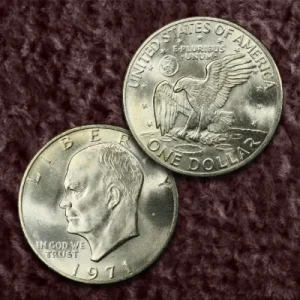
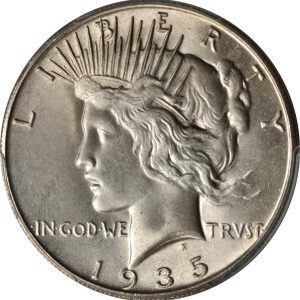
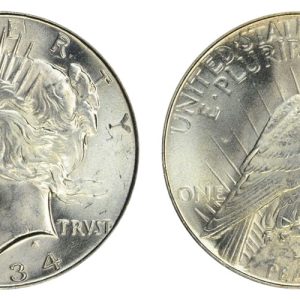
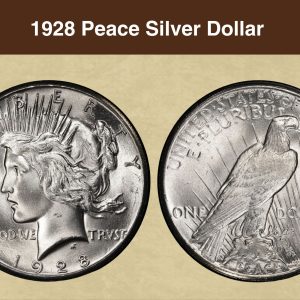
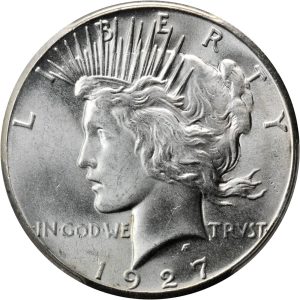
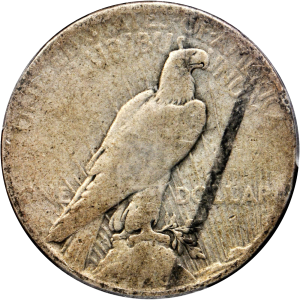
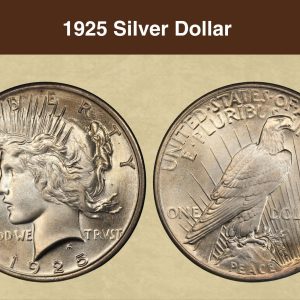
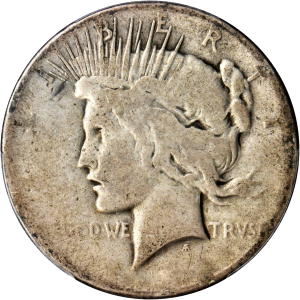
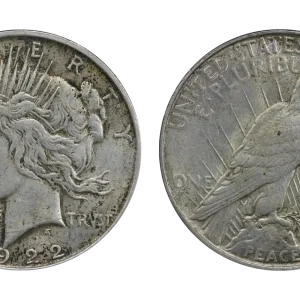
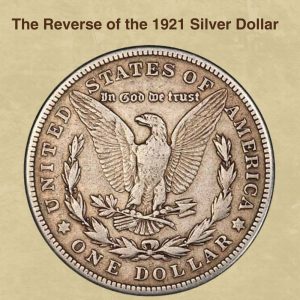
What is the error on the 1923-S Peace Dollar?
This coin contains a struck through grease mint error on both the obverse and reverse sides of the coin as indicated by the arrows. Featured here is the 1923-S Peace dollar. This coin contains a struck through grease mint error on both the obverse and reverse sides of the coin as indicated by the arrows.
How much is a 1923-S Peace Dollar worth?
A 1923-S Peace dollar’s value ranges from approximately $48–$60 for circulated coins to over $49,200 for high-grade uncirculated examples (MS66), with the final price highly dependent on condition, rarity, and specific errors. For example, a 1923-S in Mint State 65 sold for $2,585, while another graded higher sold for significantly more.
What makes a 1923-S Peace Dollar rare?
A 1923 silver dollar is rare not because of its high mintage, but because of its condition. The 1923-S coin, for instance, is rare in higher grades like MS-65 or above due to its poor striking quality and high mintage, which led to many being weakly struck and aesthetically unappealing. Conversely, coins with specific mint errors or variations, like a 1923-D with a “doubled eagle head,” are rare and valuable regardless of their condition.
Where is the mint mark on the 1923 Peace Dollar?
The mint mark on a 1923 silver dollar is on the reverse side (tails) of the coin, below the word “ONE,” to the left of the eagle’s tail feathers. If there is no mint mark, the coin was minted in Philadelphia. For mints other than Philadelphia, the mint mark will be either a “D” for Denver or an “S” for San Francisco, placed above the eagle’s wings.